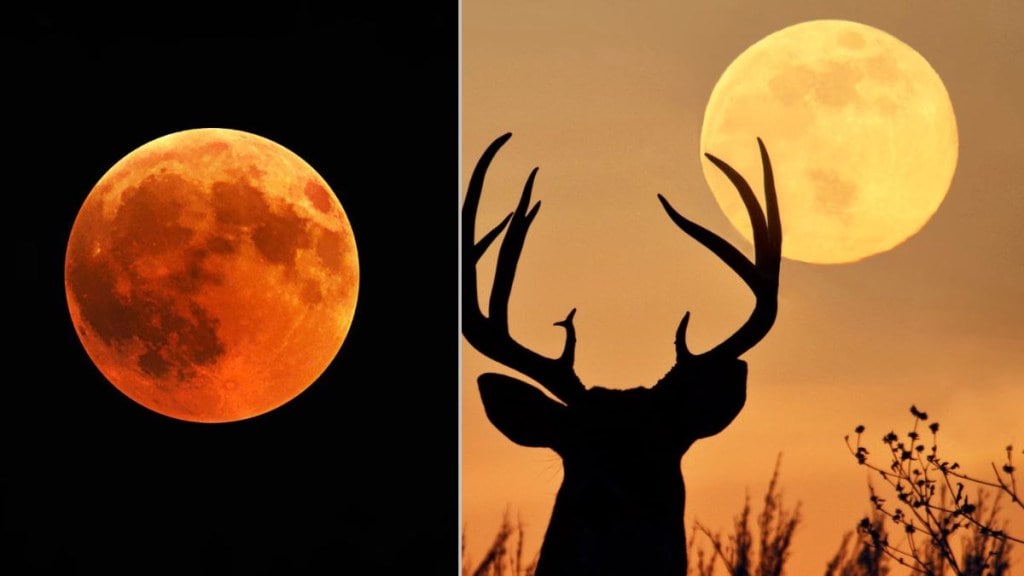The night sky is set to deliver a stunning spectacle this evening as July’s full moon, known as the Buck Moon, rises in all its glory. But this is not just any full moon, the 2025 Buck Moon brings with it a rare blend of celestial events that make it one of the most fascinating lunar displays of the year.
The best time to watch
The Buck Moon will reach peak illumination at 4:36 p.m. EDT (2036 GMT). Although the moon won’t be visible until after sunset, it will begin rising over the southeastern horizon around 8:53 p.m. local time in New York. The exact moonrise time varies based on your location, so it is worth checking reliable platforms like timeanddate.com or in-the-sky.org to get accurate viewing times for your area.
Why it is called the Buck Moon
The name Buck Moon originates from Native American traditions. July marks the period when male deer or bucks begin regrowing their antlers after shedding them in the spring. This is a time of rapid growth, with antlers developing as much as a quarter-inch per day. The full moon of this month also goes by other names, including the Thunder Moon, a nod to the frequent summer storms and the Hay Moon, as farmers in Europe traditionally gathered hay during this time. Other historical names include the Salmon Moon and Halfway Summer Moon, all reflecting seasonal changes observed across cultures.
This year’s Buck Moon is special for several reasons, thanks to an unusual cocktail of orbital dynamics. One standout factor is its proximity to the summer solstice. In the weeks following the solstice, the sun rides high across the sky while the moon takes a lower path, hugging the southern horizon.
In 2025, this low trajectory is intensified by a rare astronomical event known as a Major Lunar Standstill. Occurring roughly every 18.6 years, this phenomenon happens when the sun’s gravity tugs at the moon’s tilted orbit, causing it to reach its maximum inclination relative to Earth’s celestial equator. As a result, the moon travels an unusually high or low arc across the sky depending on the time of year and in July, that means it will appear exceptionally low.
Adding to its uniqueness, the Buck Moon is also the closest full moon to aphelion, the point in Earth’s orbit where it’s farthest from the sun. While this won’t cause any visible difference in the moon’s brightness or size, it is another astronomical curiosity worth noting.
What to look for
During a full moon, earth sits directly between the sun and the moon, allowing the lunar surface to be fully illuminated from our point of view. This eliminates the long shadows that define features during quarter phases, but it also explains the dark, flat expanses known as maria, vast plains formed by ancient lava flows. You may also notice bright rays extending from major impact sites, like the iconic Tycho crater in the moon’s southern region. These streaks are remnants of material flung out during violent asteroid strikes. This full moon also presents a chance to reflect on humanity’s journey to the moon. July 2025 marks the 56th anniversary of the Apollo 11 moon landing. Using apps or a telescope, you can even try spotting the general regions of the six Apollo landing sites. A 6-inch scope can help bring out more detail, but even the unaided eye offers a connection to that remarkable era of space exploration.

